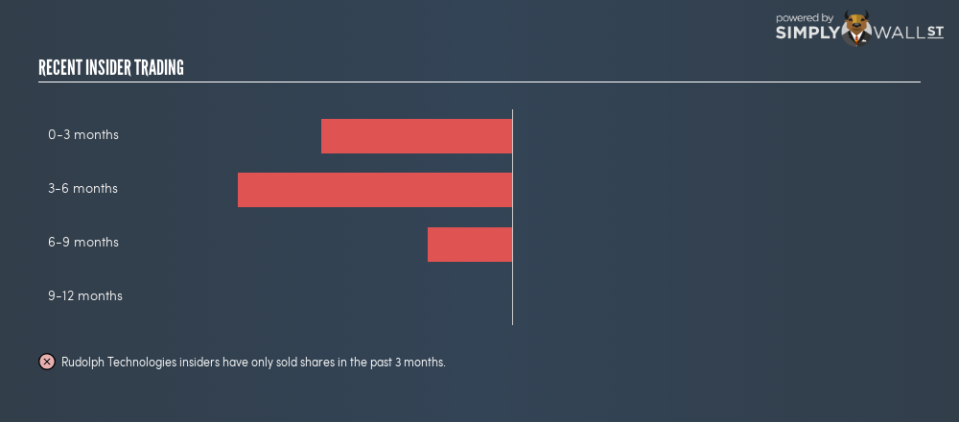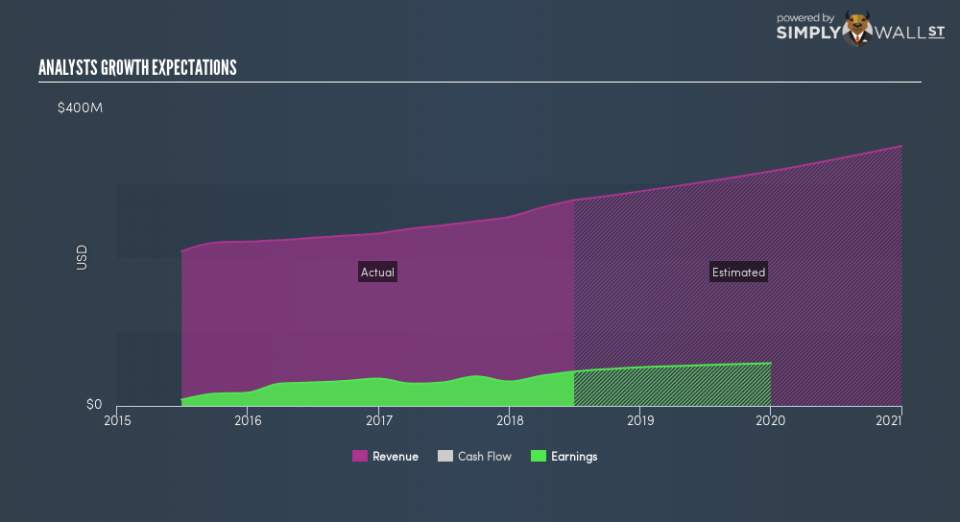Why Are Insiders Pessimistic About Rudolph Technologies Inc’s (NYSE:RTEC) Stock?

Rudolph Technologies, Inc. designs, develops, manufactures, and supports process control defect inspection and metrology, advanced packaging lithography, and data analysis systems and software used in microelectronic device manufacturing. Rudolph Technologies is one of United States’s small-cap stocks that saw some insider selling over the past three months, with insiders divesting from 21.47k shares during this period. It is widely considered that insider selling stock in their own companies is potentially a bearish signal. A research published in The MIT Press (1998) concluded that stocks following insider selling fell 2.7% compared to the market. However, it may not be sufficient to base your investment decision merely on these signals. I’ve assessed two potential reasons behind the insiders’ latest motivation to sell their shares.
Check out our latest analysis for Rudolph Technologies
Who Are The Insiders?
There were more Rudolph Technologies insiders that have sold shares than those that have bought. In total, individual insiders own less than one million shares in the business, or around 2.07% of total shares outstanding. The following insiders have recently reduced their company holdings: Daniel Berry (board member) , Leo Berlinghieri (management) , Richard Rogoff (management) and Steven Roth (board member) .
Is This Consistent With Future Growth?
On the surface, analysts’ earnings growth projection of 58.79% over the next three years provides a great outlook going forward. But this is not consistent with the signal company insiders are sending with their net selling activity. Digging deeper into the line items, analysts anticipate a rather subdued top-line growth over the next year, however, earnings growth is expected to be strong at 17.88%. This may mean the company’s cost-cutting initiative will be significant enough to boost earnings. However, insiders may recognise this is not a sustainable practice and this negative sentiment is evidenced by their net selling activity. Or they may simply view the current share price is well-above the intrinsic value, providing a prime time to sell.
Did Insiders Sell On Share Price Volatility?
Alternatively, the timing of these insider transactions may have been driven by share price volatility. Volatility provides an opportunity to trade on market inefficiencies when the stock is under-priced compared to the stock’s intrinsic value. In the past three months, Rudolph Technologies’s share price reached a high of $34.4 and a low of $26.55. This indicates reasonable volatility with a change of 29.57%. Insiders’ purchases may not be driven by this movement but perhaps they may simply want to diversify their holdings, distribute stock to investors, or simply require the cash for personal reasons.
Next Steps:
Rudolph Technologies’s insiders’ meaningful divestments tells us that their shares have recently fallen out of favour, though the positive growth in expected earnings tells us a different story, and the relatively stable stock price may not warrant exploiting any mispricing. However it’s crucial to note that insider divesting may have nothing to do with their views on the company’s future performance. Furthermore, while insider transactions could be a helpful signal, it is definitely not sufficient on its own to make an investment decision. I’ve put together two fundamental aspects you should further examine:
Financial Health: Does Rudolph Technologies have a healthy balance sheet? Take a look at our free balance sheet analysis with six simple checks on key factors like leverage and risk.
Other High Quality Alternatives : Are there other high quality stocks you could be holding instead of Rudolph Technologies? Explore our interactive list of high quality stocks to get an idea of what else is out there you may be missing!
NB: Figures in this article are calculated using data from the last twelve months, which refer to the 12-month period ending on the last date of the month the financial statement is dated. This may not be consistent with full year annual report figures.
To help readers see past the short term volatility of the financial market, we aim to bring you a long-term focused research analysis purely driven by fundamental data. Note that our analysis does not factor in the latest price-sensitive company announcements.
The author is an independent contributor and at the time of publication had no position in the stocks mentioned. For errors that warrant correction please contact the editor at editorial-team@simplywallst.com.


